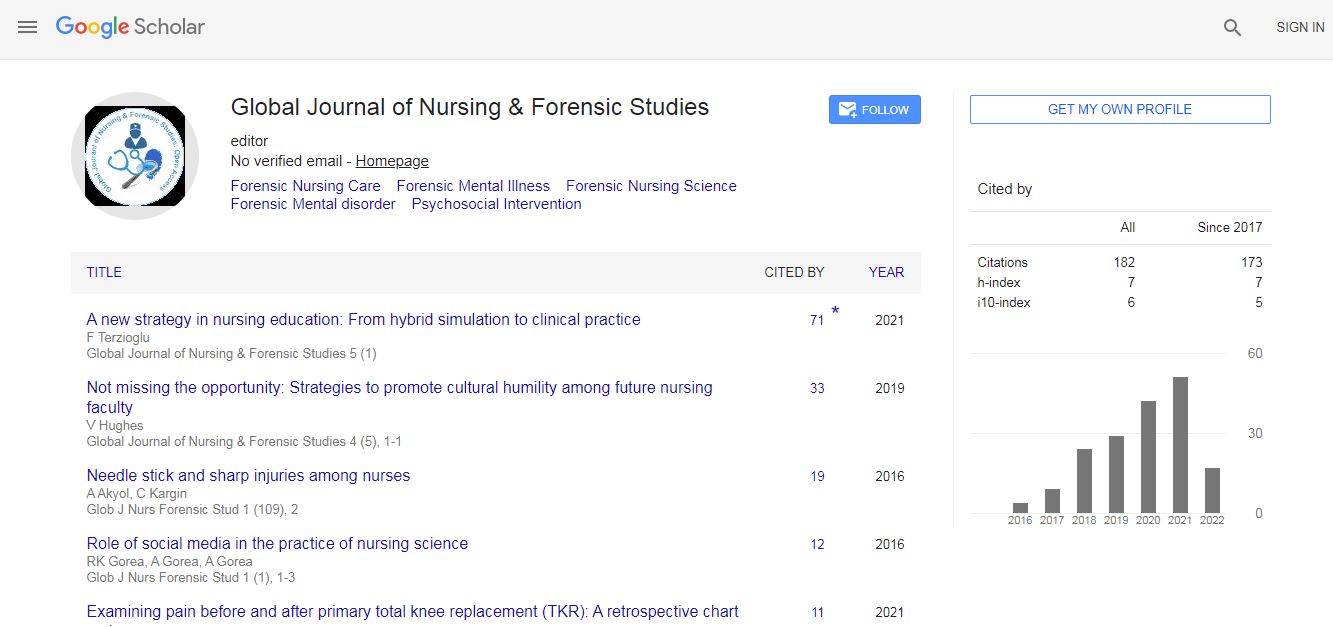Our Group organises 3000+ Global Conferenceseries Events every year across USA, Europe & Asia with support from 1000 more scientific Societies and Publishes 700+ Open Access Journals which contains over 50000 eminent personalities, reputed scientists as editorial board members.
Open Access Journals gaining more Readers and Citations
700 Journals and 15,000,000 Readers Each Journal is getting 25,000+ Readers
Google Scholar citation report
Citations : 82
Optometry: Open Access received 82 citations as per Google Scholar report
Indexed In
- Google Scholar
- RefSeek
- Hamdard University
- EBSCO A-Z
- Euro Pub
- ICMJE
Useful Links
Recommended Journals
Related Subjects
Share This Page
Contact lenses in Saudi Arabia: Prevalence and characteristics of wear and care
11th Global Ophthalmologists Annual Meeting
Nuha Saleh Alsalameh
King Saud University, KSA
Posters & Accepted Abstracts: Optom open access
Abstract
Introduction: In the early seventies, the US Food and Drug Administration (FDA) approved the first contact lenses (CLs) for human use. CLs are considered medical devices and can be worn to correct various refractive errors, such as myopia, hyperopia, astigmatism and presbyopia. They can also be worn for cosmetic or therapeutic purposes. The continuous improvement in CL biocompatibility materials and oxygen transmissibility allows users to wear them on a daily, weekly or monthly basis without obvious complications. It has been estimated that the number of CL wearers exceeds 140 million worldwide. In the United States, the number of contact lens wearers is estimated to be 40.9 million according to a population-based survey methodology by the centers for disease control and prevention. In the United Kingdom, the number of CL wearers has risen from 1.6 million in 1992 to 3.5 million in 2014 then to 3.7 million in 2016. However, many CL wearers do not have enough knowledge (or exhibit poor compliance) about lens use, lens hygiene or the importance of aftercare visits to eye care practitioners (ECPs), which may lead to serious corneal and conjunctival complications. Purpose: To assess the prevalence and trend of contact lens (CL) wear and care among the Saudi Arabian community. Method: In total, 20415 Saudi Arabian citizens from all five geographic areas of Saudi Arabia volunteered to participate in an online self-administered questionnaire. The questionnaire was constructed to gather information regarding CL wearer demographics, education level, current job, purpose of wear, wearing habits during the day, sharing of CLs with friends, wearing hygiene, lens case replacement and attitudes toward aftercare visits. Results: Out of the 20415; 10858 (53.2%) were CL wearers. Out of the CL wearers, 88.8% were females and 11.2% were males with the majority in the age group of 16-20 (35.2%) and 21-25 (35.5%). Central and western regions had the majority of CL wearers (37.3% and 35.3%, respectively). Students were considered the majority in CL wear (58.4%), and cosmetic purpose was the main reason for wear (43.1%) followed by correction purpose (31.3%). Regarding wearing habits, 21.8% of participants stated that they had slept while wearing their lenses on various occasions and 18.4% had shared their lenses with friends with females being dominant in sharing lenses with friends (95.2%). Hand washing, changing lens solution and lens case replacements were applied regularly by 72.7%, 50.2% and 32.9% respectively. About two thirds (62.4%) stated that they obtained their lenses without prescription and the majority (58.8%) stated that they had not visited an eye care practitioner (ECP) for a checkup. Conclusion: This study presents the prevalence and characteristics of CL wear and care in all five geographical areas of Saudi Arabia. Poor compliance was clear regarding many CL aspects. The results will help health authorities and ECPs in planning better CL services and restricted rules need to be applied to regulate CL sale and wear in Saudi Arabia.Biography
Nuha Saleh Alsalameh is currently placed as an Intern at King Saud University, Saudi Arabia. 1 She have certificate of appreciation for contribution in the organization of world glaucoma week event, at panorama mall, Riyadh, on 15-16 March 2017 She have certificate on cooperation on world kidney day on 14-15 march 2014 at sahara mall with prof ahmed mitwalli. 2 She have certificate for being active member in the documentation team in IBD educational program entitled: yes i can on 2014 at grnada mall with dr.othman alharbi. 3 She have certificate for contribution in campaign called (your immunity is your life) on 11, april, 2015 at grinatah mall with doctor nouf alkhamis. 4 She have certificate for collaboration on English club at prepatury year on 2012 5 She participated to collect and distribute gifts for patient at kkuh on Eid, but the certificate not given yet. 6 She has cooperation with scoliosis activity 7 Certificate of appreciation in recognition for valuable contribution as a participant at watan wa hayat 5(in helping poor people and community awareness), held on duration from 5 - 29 2016, Riyadh 8 Certificate of appreciation of being a participant in world diabetic day a credit by the Saudi commission for health specialties 2015 11- 15 9 Certificate of appreciation for effort and participating as a member in the following teams (physiology and anatomy team) with a total of 21 hours participation, was part of the student to student mentoring activity and it had positivity affect her excellent performance during the academic year, 2012 – 2013 10 Certificate of appreciation for participation in the Multiple Sclerosis adherence a study in Saudi Arabia 2013 to 2014

 Spanish
Spanish  Chinese
Chinese  Russian
Russian  German
German  French
French  Japanese
Japanese  Portuguese
Portuguese  Hindi
Hindi 